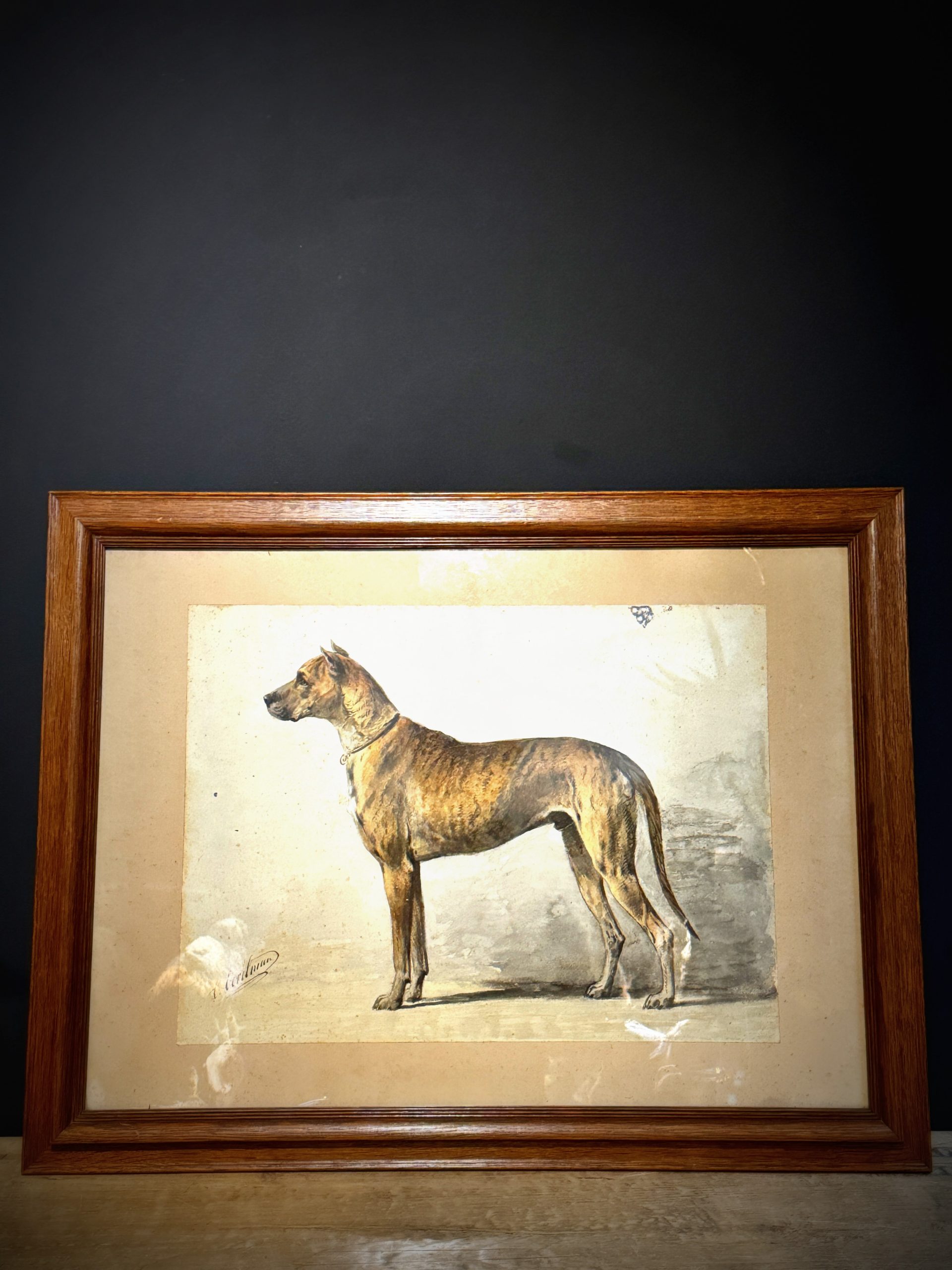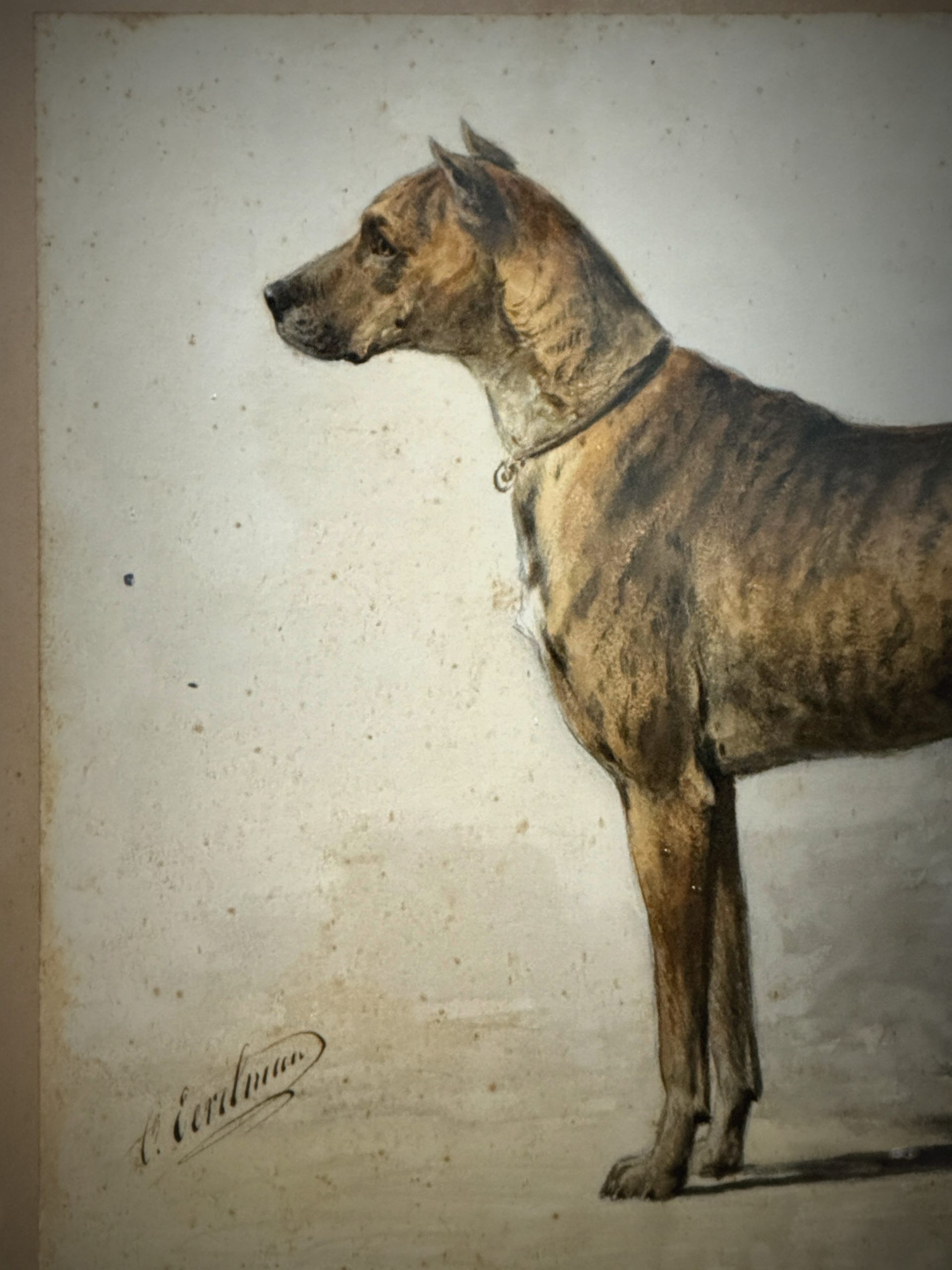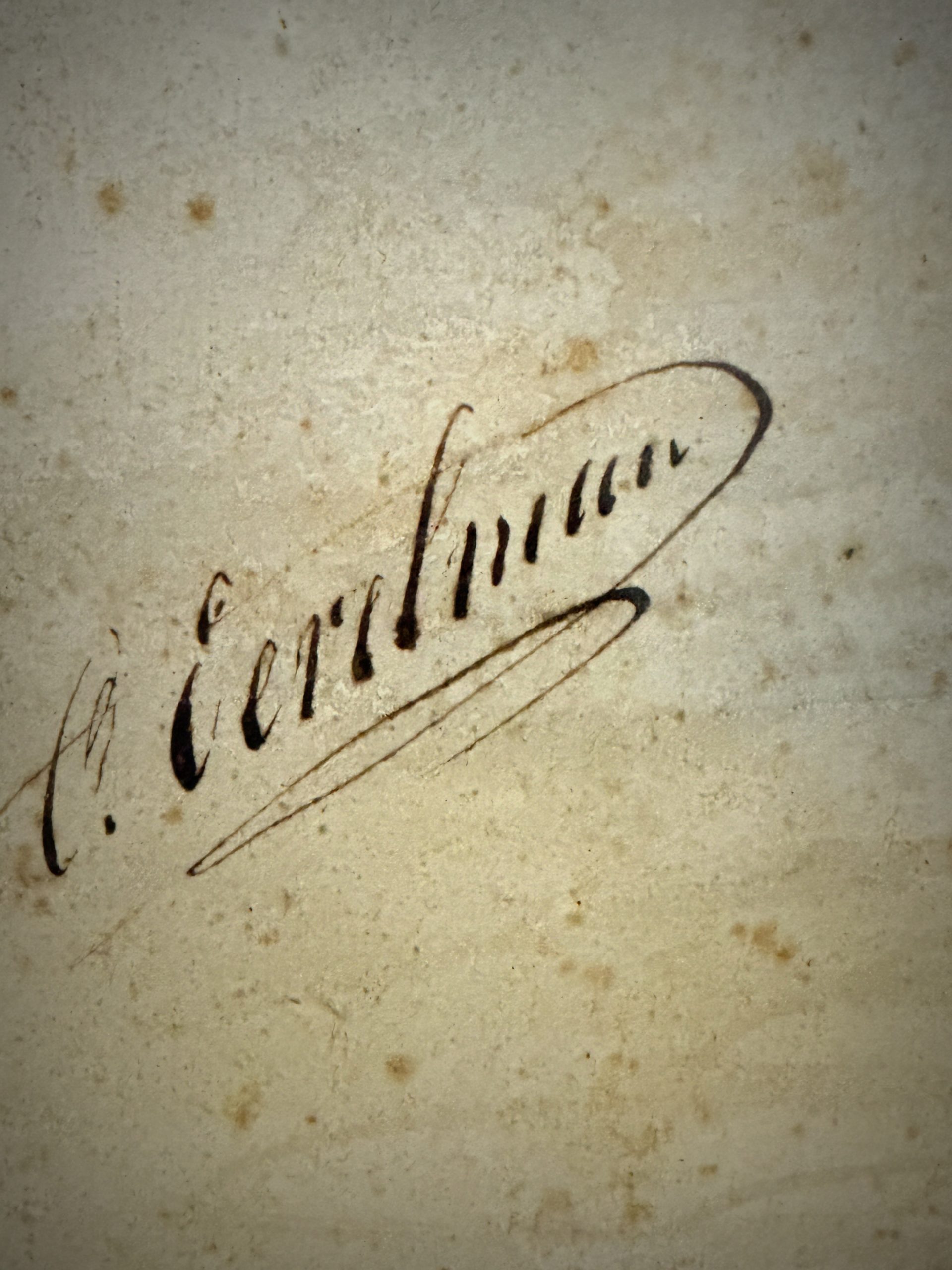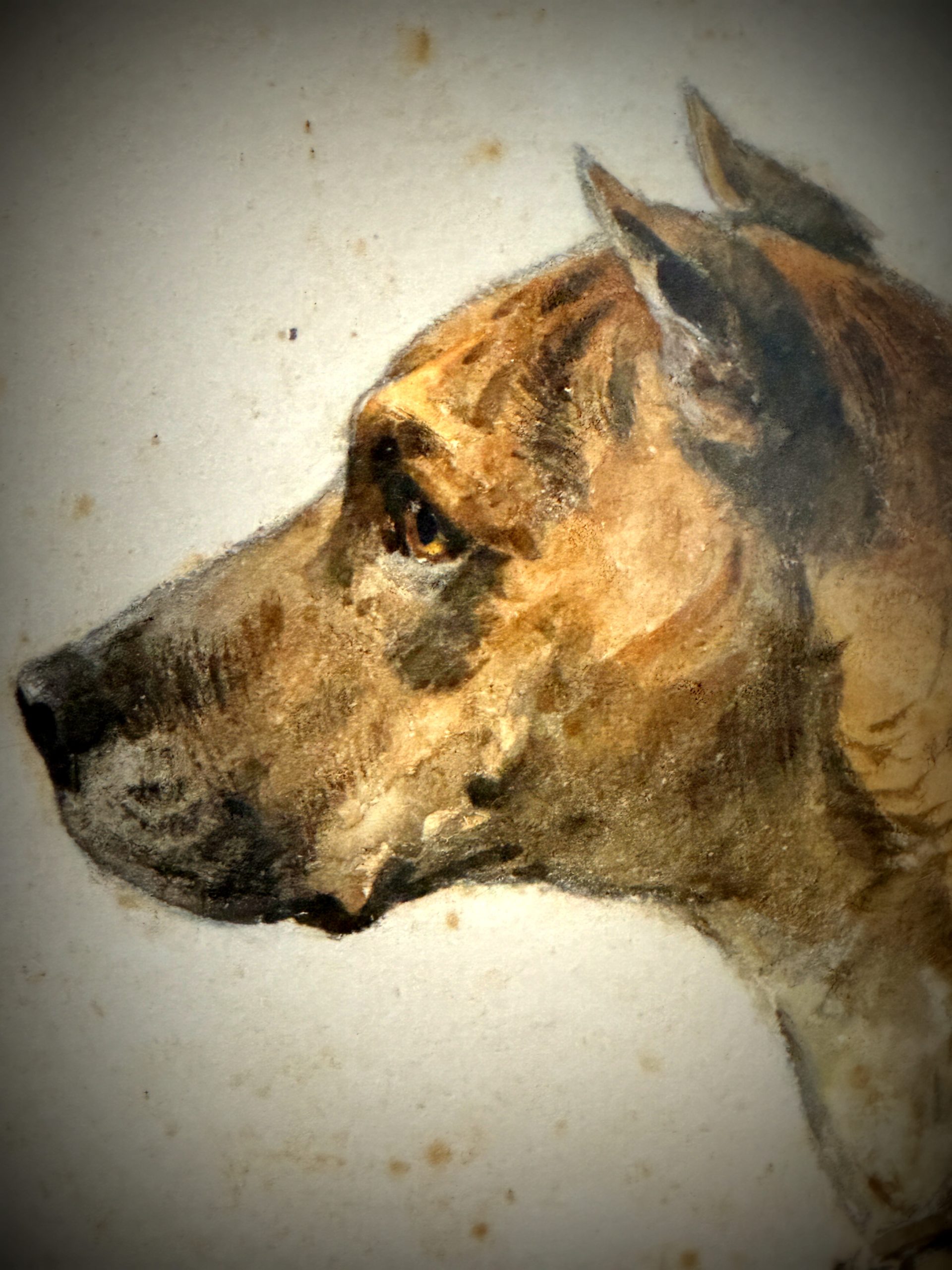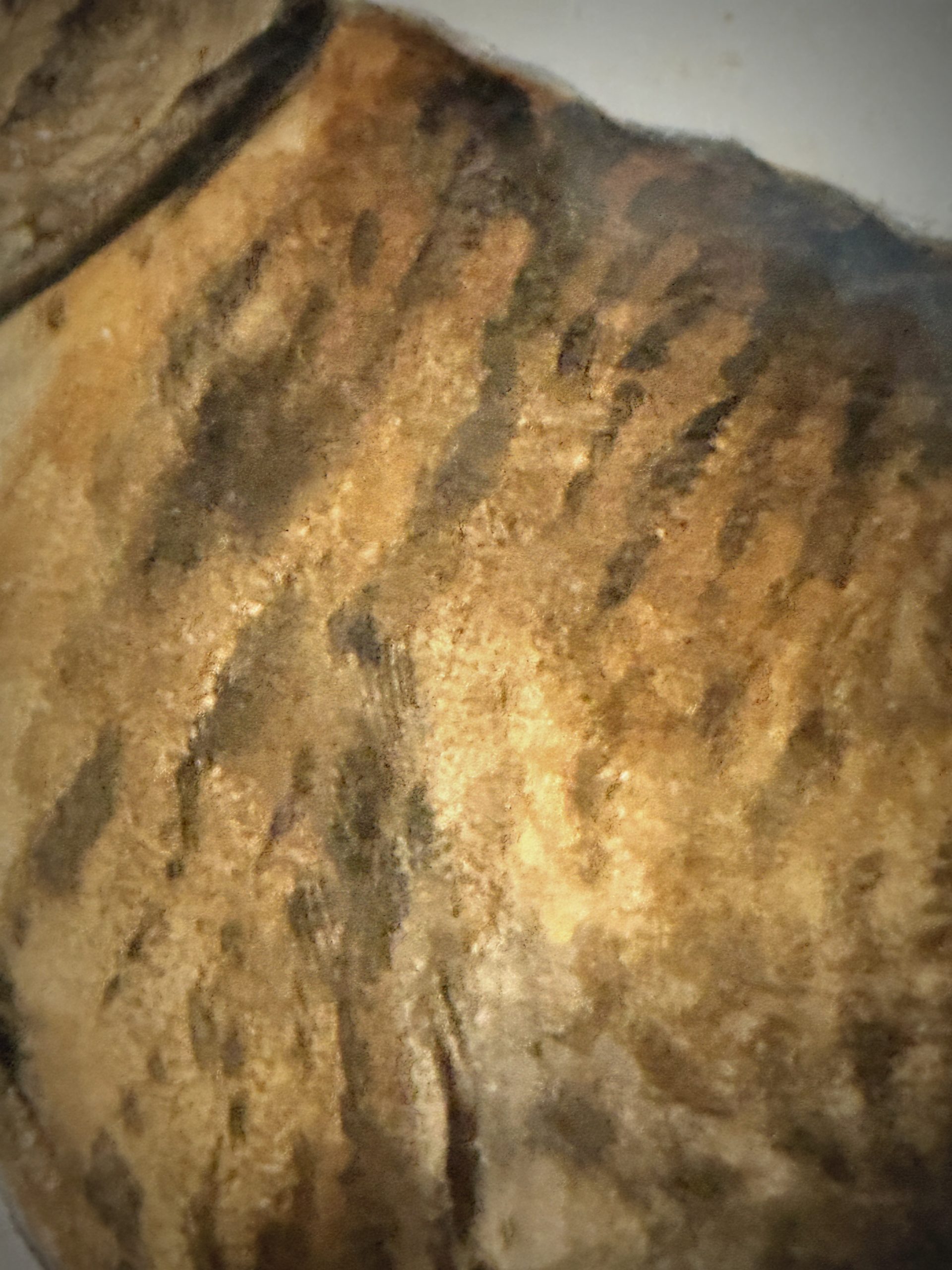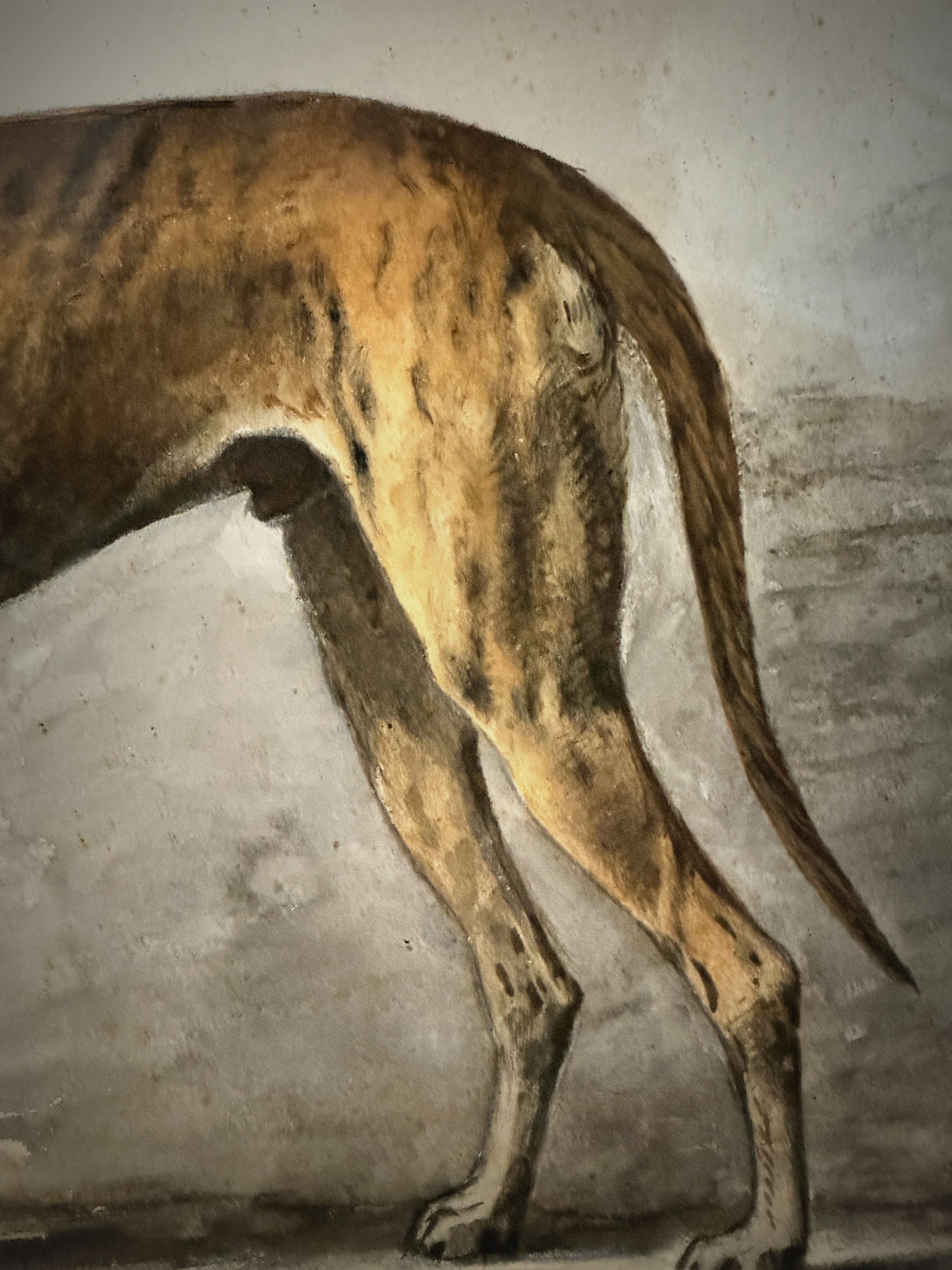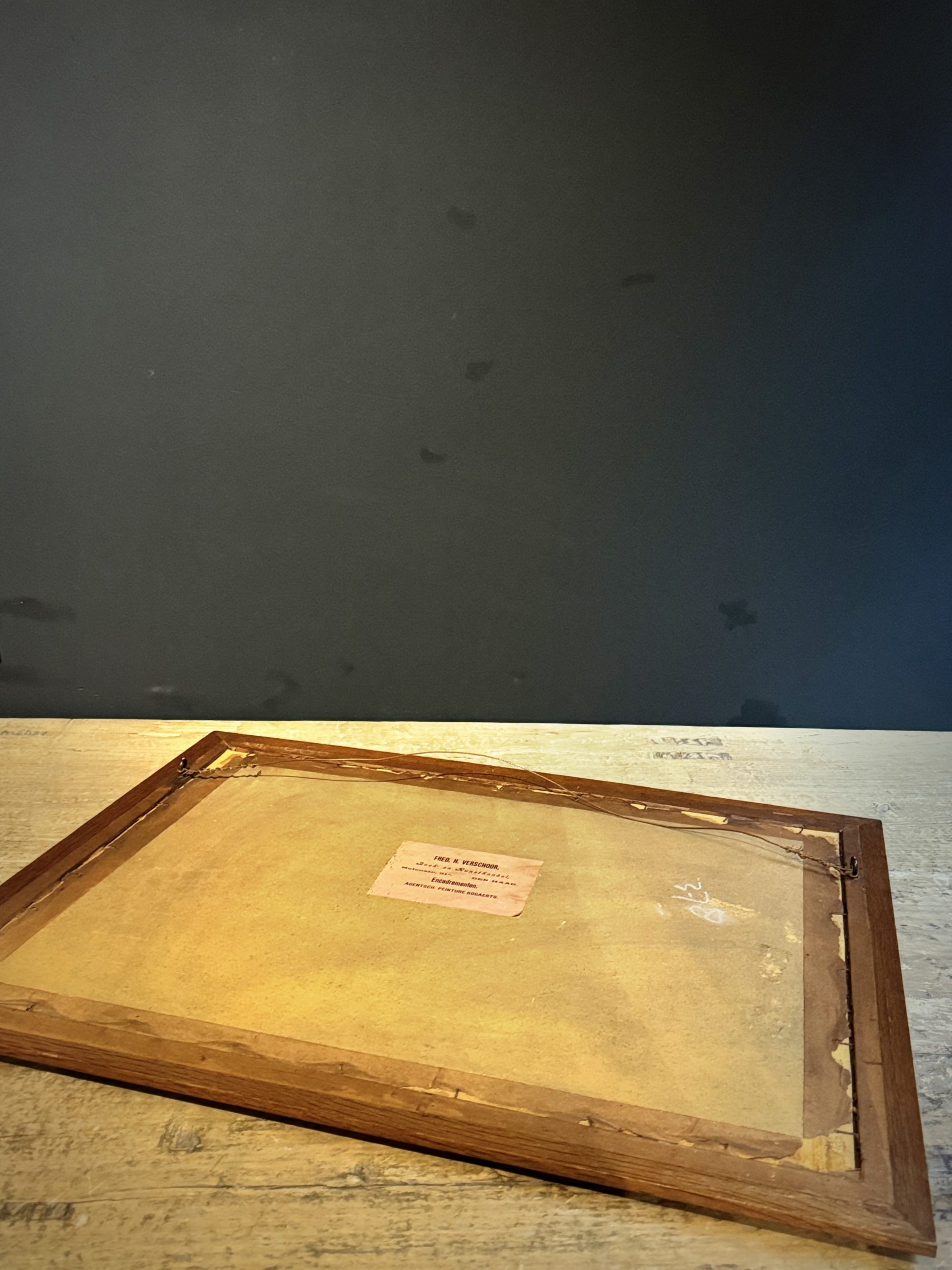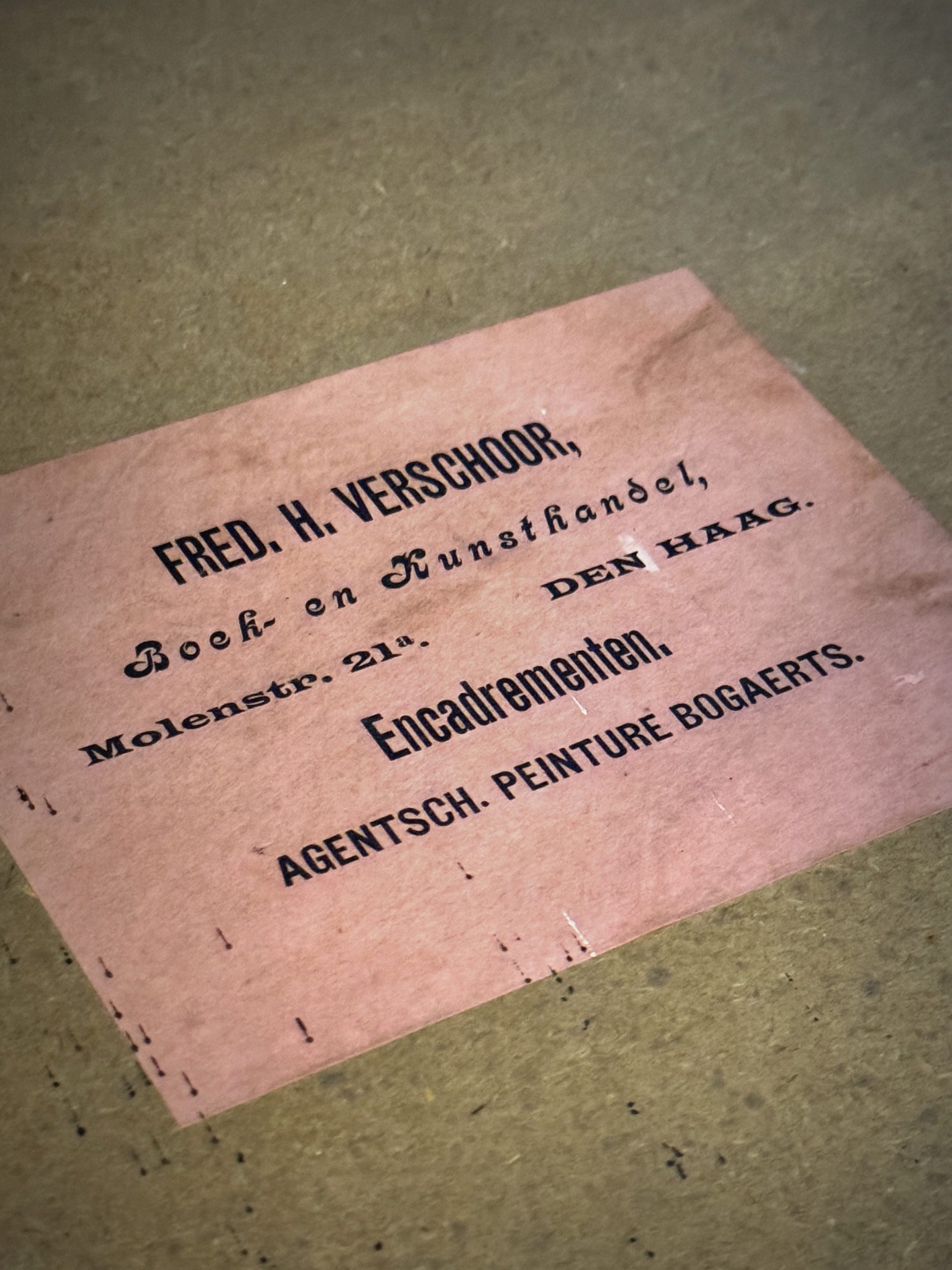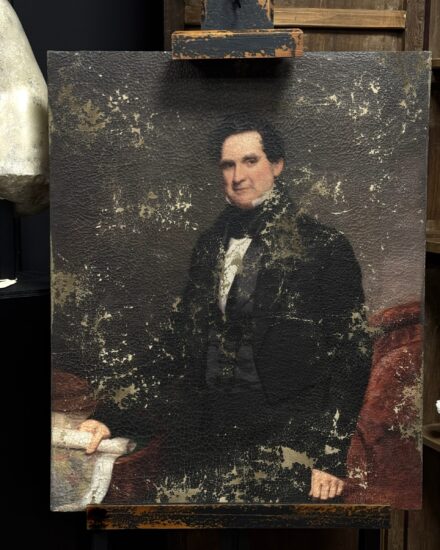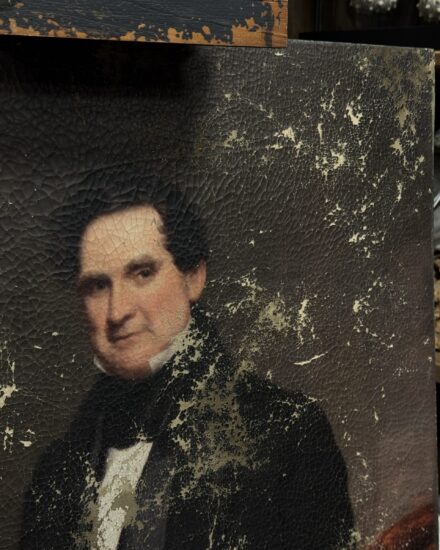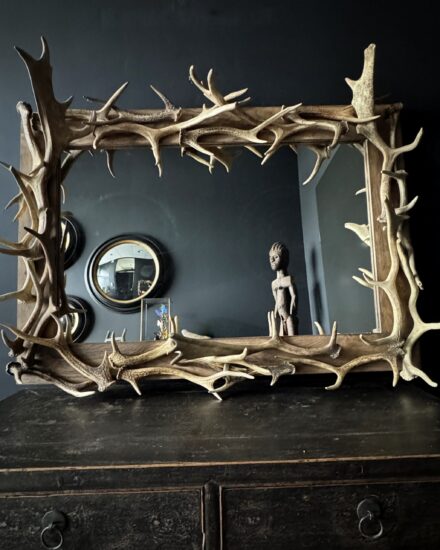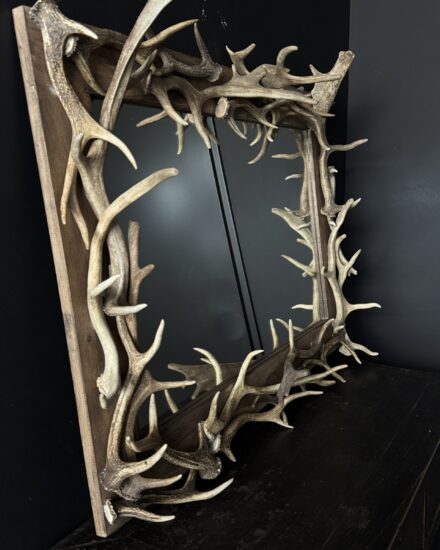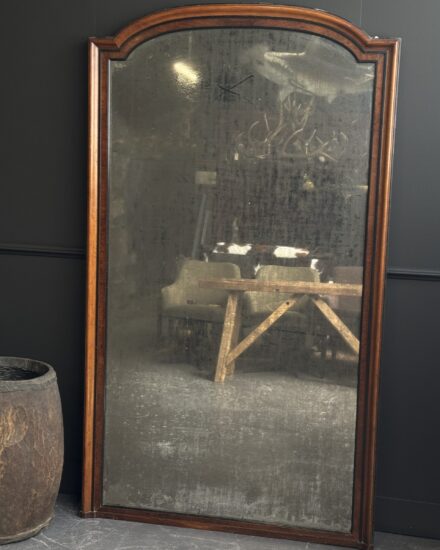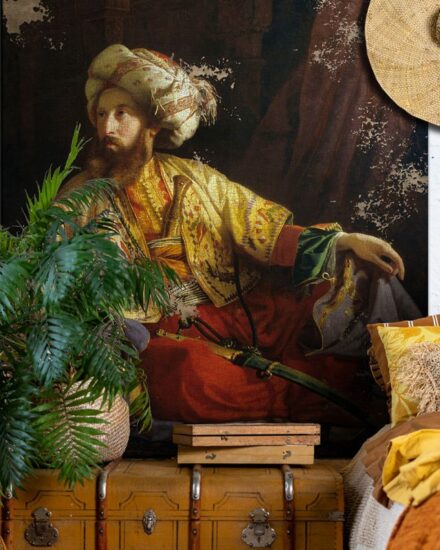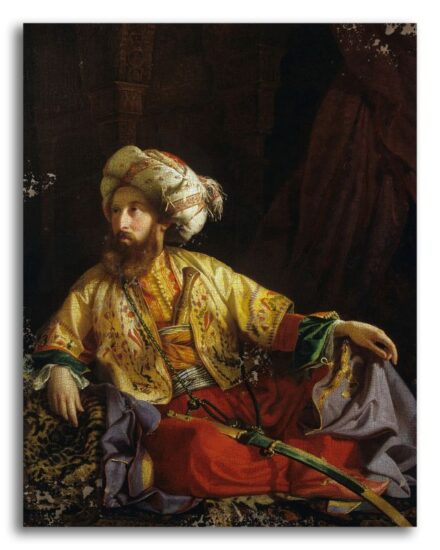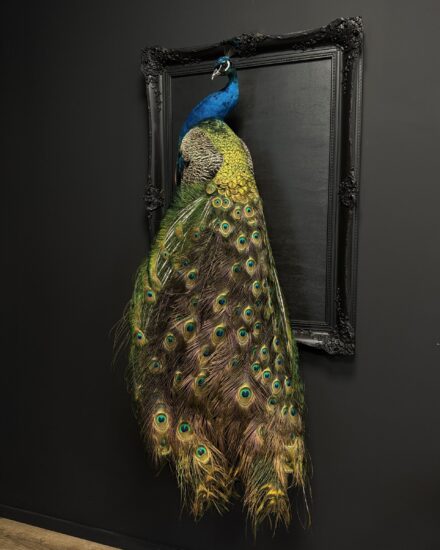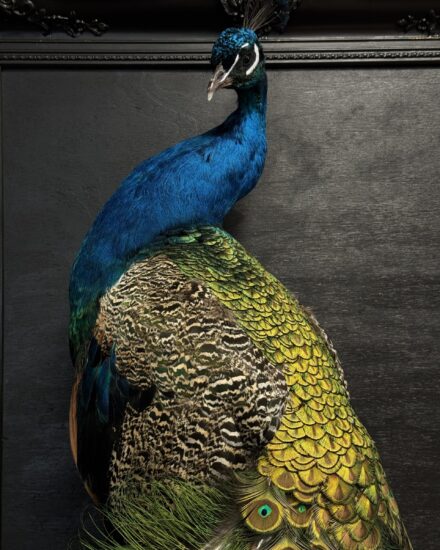Watercolor by Otto Eerelman in original frame.
From Wikipedia, the free encyclopedia.
Otto Eerelman (Groningen, March 23, 1839 - there, October 3, 1926) was a painter, etcher and lithographer best known for his nature-like sketches and paintings of dogs and horses. He also produced several portraits of Princess Wilhelmina in her younger years and later as Queen as a court painter.
Life Course
Eerelman was a son of Samuel Eerelman, sexton of the A Church, and Cornelisje Pluimpker. Skilled as a draughtsman from an early age, Otto Eerelman chose a life as an artist against his parents' wishes and began his studies at the Minerva Academy in Groningen in 1860. After completing that in 1863, he decided to continue his studies for another year in 1864 at the Royal Academy of Fine Arts in Antwerp and from 1865 for some time at the studio of Lourens Alma Tadema (who would later become famous as "Sir" Lawrence Alma-Tadema).
After a short time in Paris, Eerelman returned to Groningen to work at the Academy Minerva from 1867 to 1874. In 1874, he moved to Brussels to devote himself entirely to painting, but came to The Hague as early as 1875, where he lived and worked until 1902,[1] during which time he also received regular commissions from the royal house. There is an equestrian portrait of Queen Wilhelmina at the Loo that is by Eerelman's hand.
After a stay in Arnhem (for health reasons) he returned to Groningen in 1907, where he continued to live. Already during his lifetime he was praised and respected for his outstanding works, and at the age of eighty he was knighted and a street was named after him in Groningen. Upon his death, the city mourned. A local newspaper wrote: "Deez artist was one of those, whose name, though he went away from us, continues to resound, undiminished in strength." Otto Eerelman is buried in a family grave in the Zuider Cemetery in Groningen.
Otto Eerelman was so renowned in Groningen that Groningers visiting the Paris Louvre asked "where the Eerelmans hung?" but his work was not much appreciated later in the 20th century. In recent years, Eerelman's paintings are again bringing in hefty prices.
Well-known works[edit | edit source]
Besides the various paintings Eerelman made for the royal house, such as a portrait of the minus Evertje Schouten, a painting of the eight-year-old Wilhelmina dressed in a white amazon suit and pictured with her pony "Baby" (which may be best known for the Orange depicted), a few other works have also become known to a wider public.
In 1898 the art album Horse Breeds was published, in which explanatory texts by E.A.L. Quadekker were accompanied by some forty lithographs (produced by Richard Schoenbeck) of Eerelman's horse paintings. Because of Army Capt. Quadekker's thorough expertise and Eerelman's highly accurate sketches and paintings, this was a highly valued and sought-after book. As a tribute to the royal family, Queen Wilhelmina's favorite horse "Woyko" was given a prominent place at the beginning of the book. A plate work by Eerelman was translated into English by Clara Bell under the title Horses and dogs.
One of his best-known paintings is The Horse Inspection on the Grote Markt on August 28, which he commissioned by the Groningen City Council. It hangs in Groningen's City Hall and depicts how Groningen at the time celebrated the annual commemoration of the Relief of the City on August 28, 1672 with festivities and a horse fair.
Eerelman was a master at painting dogs. His fabric expression when painting the fur of these animals attests to his mastery.
Watercolor by Otto Eerelman.
- Length: 73 cm
- Height: 57 cm
Request For More Information
